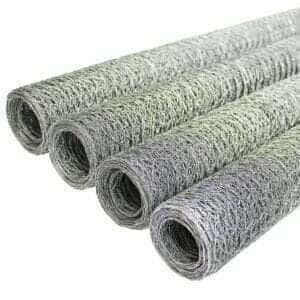







£89.99 inc VAT


This website is secured:
✔ The UK’s Largest Range Of Mesh Products
✔ FREE UK Delivery Included
✔ Immediate Express Dispatch From Stock
✔ Tracked Delivery with Order Updates
✔ 30-Day Returns Accepted
@ ☏ Trade Prices For Larger Quantities Available
The C8/80/15 Metal Mesh stock fence is a durable fencing material designed for agricultural and livestock management. Characterised by its height, strength, and wire gauge—indicated by the “C8/80/15” designation—this fence is rated for quality and strength (“C”), stands 8 centimeters high, and features a strength level of 80 and a wire gauge of 15, with higher numbers signifying greater strength and lower numbers indicating thicker wire.
C8/80/15 stock fence refers to a specific type of fencing material that is used for containing and managing livestock. The numbers indicate specific specifications for the fencing, including its height, strength, and gauge.
The “C” in C8/80/15 stands for “Class,” which is a rating system used to indicate the quality and strength of the fence. The first number, “8,” refers to the height of the fence in centimetres. The second number, “80,” indicates the strength of the fence, with higher numbers indicating a stronger fence. The third number, “15,” refers to the gauge of the wire used, with lower numbers indicating thicker wire.
This type of stock fencing is commonly used in agriculture and livestock management, as it provides a durable and secure barrier for containing and managing livestock animals. However, it is important to follow the manufacturer’s specifications and seek professional advice to ensure that the fence is properly installed and meets building codes and regulations.
We recently wrote a blog giving expert installation tips for stock fencing. Give is a quick read if you are unsure about how this mesh can be used for your project.
Our group have been in the mesh industry for over 150 years. We are one of the UK’s most trusted mesh suppliers because:
The Mesh Company has an enormous range of garden wire mesh products. We truly are an industry leader among suppliers of weld mesh and woven wire materials. With the capabilities we have in-house, we can provide virtually anything you require. Chicken wire, insect meshing and rodent mesh materials are also available in large stock quantities at bargain prices.
Stock fencing is primarily used for containing and managing livestock animals, such as cows, horses, sheep, goats, and pigs. The height and strength of the fence is designed to prevent the animals from escaping and to keep them safe and secure.
This type of fencing is commonly used on farms, ranches, and other agricultural properties. It can also be used in residential and commercial settings to create animal enclosures or to separate areas for different types of livestock.
The specific design of the stock fence, including the height and type of material used, can vary based on the type of animal it is meant to contain. For example, horse fencing may be taller and sturdier than fencing for smaller animals like sheep or goats.
To erect stock fencing, you will need to follow these steps:
It is recommended to seek professional assistance or consult with the manufacturer’s instructions for specific guidance on how to install your particular type of stock fencing.
The distance between stock fence posts depends on the height and type of fencing being used. As a general guideline, stock fence posts should be placed 6 to 8 feet apart for standard wooden or metal panel fencing, and 8 to 10 feet apart for tall, heavy-duty fencing.
However, it is important to follow the manufacturer’s specifications or seek professional advice to ensure that the fence is properly supported and meets building codes and regulations. The spacing between posts can also vary based on local soil conditions, climate, and other factors.
The lifespan of a galvanised stock fence can vary depending on several factors, such as the quality of the materials used, the thickness of the zinc coating, the location and weather conditions, and the amount of maintenance performed.
On average, a well-maintained galvanised stock fence can last anywhere from 20 to 30 years or longer, with some lasting up to 40 years or more. The zinc coating helps to protect the steel or iron from rust and corrosion, which can prolong the lifespan of the fence.
Regular maintenance, such as cleaning and repainting, can help to extend the life of the fence and keep it looking its best. If the fence becomes damaged or starts to rust, it may need to be repaired or replaced.
Yes, galvanised steel can be painted. The zinc coating on galvanised steel provides a barrier that helps to prevent rust and corrosion, but it is not a guarantee against these issues. Over time, the zinc coating can wear away, leaving the steel vulnerable to rust and corrosion.
Painting galvanised steel can help to extend its lifespan and improve its appearance. However, it is important to properly prepare the surface before painting to ensure that the paint adheres properly. This typically involves cleaning the surface and applying a primer specifically designed for use on galvanised steel.
It is also important to choose a high-quality paint that is suitable for use on metal surfaces and that is compatible with the primer used. A good quality paint and proper preparation can help to ensure that the painted galvanised steel lasts as long as possible.
Check out our blog how to choose the right livestock fencing for your property for more information on this application. Our goal for our blogs and help guides is to answer as many questions as possible to help to explain the possibilities of mesh to our customers.
Contact our team today if you have any questions at all. We are always really keen to help in any way that we can.
Fence posts and tools will need to be purchased separately.
We also offer similar products through our highly popular eBay store, check us out there too.
In 2008 Locker Wire Weavers launched The Mesh Company to bring our enormous range of wire mesh products to the general public for the first time. Previously wire mesh was only available for trade customers.
We continue to extend our range, and now proudly offer many forms of mesh and metal products for the best possible prices. We specialise in woven wire mesh. As a group we work closely with architects and designers to develop ground-breaking new applications for our multifunctional range of materials. We also offer state of the art fabrication and engineering for projects of all sizes.
Strong ties with the Warrington community continue to be at the very core of our business. We are proud to invest in the training and developing our staff of all levels in line with the traditions set by Thomas Locker, who founded our group 150 years ago when he invented the electronic loom. We continue to bring ingenuity and strong ethics to our day to day business.
The Mesh Company continues Warrington’s historic role in the wire industry. For more than 140 years, our group has been a leader in the supply and manufacture of woven wire mesh and wire cloth. Having been founded in Warrington, UK in 1878, Locker mesh products still retain the quality craftsmanship and spirit of innovation that were so characteristic then.
Available Options
You will find full rolls of this insect netting here. Please be advised that the majority of woven mesh is usually available in a maximum roll size of 30 metres by 1200mm. Please email us if you wish to discuss purchasing this mesh in any size – sales@themeshcompany.com.
Feel free to call us if you wish to discuss any of our products – (+ 44) 01925 406 602. We are always happy to help in any way that we are able to.
We also offer this product through our highly popular eBay store, check us out there too.

The largest range of wire mesh, chicken wire, wire fencing, woven wire mesh and perforated metal products in Europe, delivered direct from our Warrington warehouse.




Website by: Beech Web Services | Terms and Conditions | Cookie Policy | Privacy Policy | Website Terms and Conditions
Reviews
There are no reviews yet.